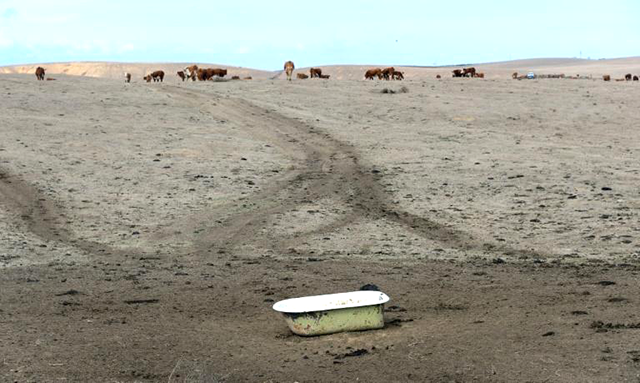PARIS — Due to global warming, the United States is today more than twice as likely to endure a devastating "dust bowl" scenario than during the Great Depression, researchers said on Monday.
Nearly a decade of heatwaves and massive dust storms across the US Great Plains in the 1930s ruined agricultural land and drove tens of thousands of farming families far and wide in search for food and work.
"The 1930s Dust Bowl heatwaves were extremely rare events that we might expect to see occur once in a hundred years," said Tim Cowan, a researcher at the University of Southern Queensland in Australia, and lead author of a study in Nature Climate Change.
"Under today's levels of greenhouse gases, they are more than twice as likely to occur, with their period-of-return reduced to once in around 40 years."
Even in the 1930s, the finger print of global warming was perceptible, although the impact on weather and climate was then extremely small.
Nearly a century later, the signature of human-induced climate change is unmistakable, and portends even more dire consequences, said senior author Friederike Otto, acting director of the Environment Change Institute at the University of Oxford.
"If extreme heatwaves and drought reduce the vegetation as they did in the 1930s, heatwaves could become even stronger," threatening global food supplies, she said in a statement.
"This scenario is more likely than ever, and should urge us to develop and implement more ambitious adaptation and mitigation plans."
Mitigation refers to reducing the source of greenhouse gases, which are produced overwhelmingly by the burning of fossil fuels.
US west in a 'megadrought'
Otto is a world leader in the growing field of attribution science, which uses observational data and simulations based on computer modelling to tease out the impact of global warming from natural variations in weather and climate.
Her warning is backed up by research published in March which shows that a multi-year Dust Bowl-type drought in the US could deplete US grain stores and have a cascading effect through the world's food system.
"A four-year decline in wheat production of the same proportional magnitude as occurred during the Dust Bowl greatly reduces both wheat supply and reserves in the United States and propagates through the global trade network," a team led by Alison Heslin at Columbia University reported in Frontiers in Sustainable Food Systems.
By the fourth year of such an event, US wheat exports would fall by half, and the country would exhaust 94 per cent of its reserves, they calculated.
The year 1936 still holds the record for the hottest year in the continental United States, but the country is tracking toward ever-warmer summers.
A study last month in the journal Science concluded that the western United States has likely entered a period of megadrought -- the fourth in 1,200 years -- that could last decades, even a century.
Globally, 19 out of 20 of the warmest years on record have occurred this century.
Average global surface temperatures -- including over oceans -- have increased by about 1.1 degrees Celsius since the pre-industrial era, the standard benchmark for global warming.
